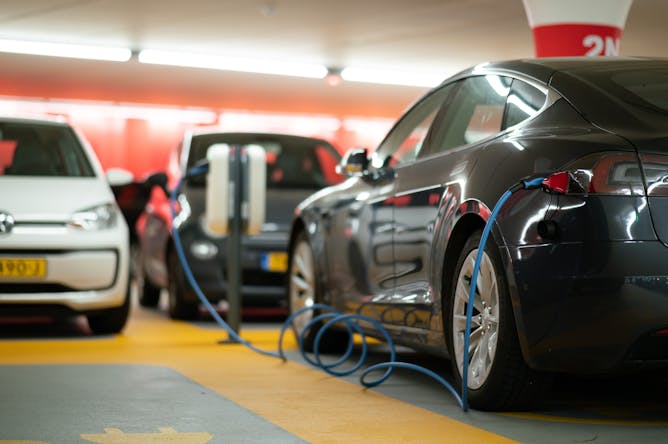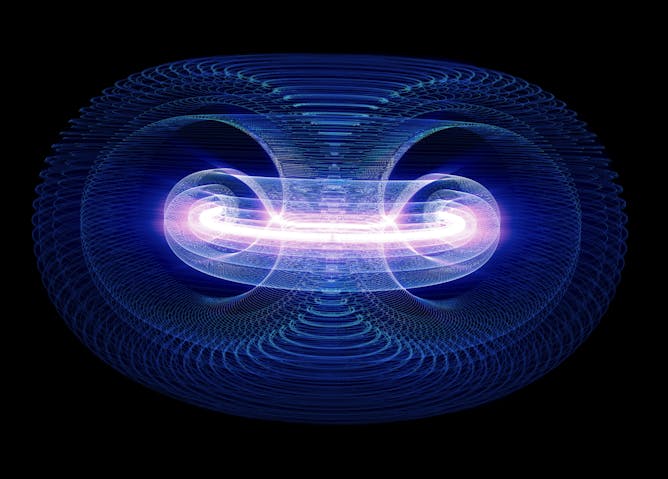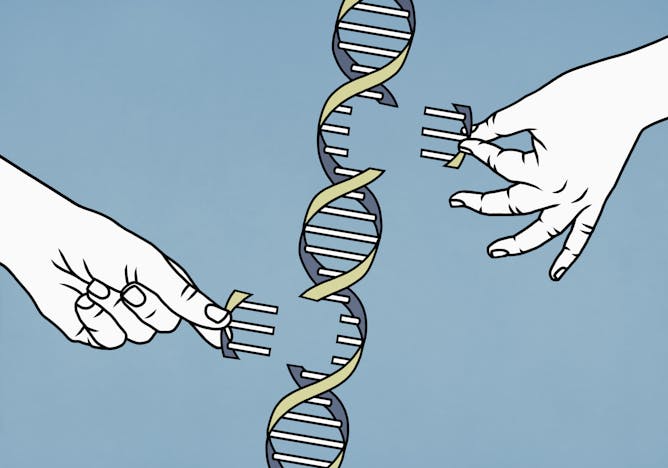|
This week’s report from the Intergovernmental Panel on Climate Change focused on ways humanity can lower emissions and limit global warming. Researcher Alan Jenn of the University of California, Davis, contributed to that document and writes for The Conversation that “deep, immediate cuts” in greenhouse gas emissions are needed. Transformations in transportation – like more electric vehicles, more renewable energy to power them and more ride-sharing – could help get us there. But the necessary “drastic reduction would require a major, rapid rethinking of how people get around globally.”
A common refrain is that electricity generated by nuclear fusion is “always 20 years away.” But nuclear researchers David Donovan and Livia Casali from the University of Tennessee explain how a recent experiment brought the field one step closer to proving that fusion can be an energy source. As a reader, I was surprised to see that they credit the advance to something as prosaic as what the walls of the nuclear reactor are made of – tungsten and beryllium instead of the graphite used previously.
If you’re a longtime consumer of science news, you likely remember the headlines from 2003 when researchers with the Human Genome Project announced it had sequenced our species’ genetic blueprint. But it’s taken almost 20 more years to fill in a few gaps that were left in those DNA instructions. Gabrielle Hartley is a genome biologist at the University of Connecticut and part of the team of researchers who have now characterized these tricky chunks of “repetitive dark matter.”
Also in this week’s science and research news:
If there’s a subject you’d like our team of science editors to investigate, reply to this email.
|

Electric vehicle sales are growing quickly.
Michael Fousert/Unsplash
Alan Jenn, University of California, Davis
A new international report on climate change finds rapid changes could cut emissions from transportation by 80% to 90%. Three behavior change trends could bring big improvements.
|

Magnetic fusion reactors contain super hot plasma in a donut-shaped container called a tokamak.
dani3315/iStock via Getty Images
David Donovan, University of Tennessee; Livia Casali, University of Tennessee
In January 2022, the JET fusion experiment produced more power over a longer period of time than any past attempt. Two physicists explain the engineering advancements that made the result possible.
|

Over half of the human genome contains repetitive DNA sequences whose functions are still not fully understood.
Malte Mueller/fStop via Getty Images
Gabrielle Hartley, University of Connecticut
Advances in technology have enabled researchers to sequence the large regions of repetitive DNA that eluded the Human Genome Project.
|
|
|
-
Nadiya Kostyuk, Georgia Institute of Technology; Erik Gartzke, University of California San Diego
Cyberattacks can be devastating, just not on the battlefield, according to researchers who looked at 10 years of armed conflicts around the world.
-
Hamutahl Cohen, University of Florida
Huge single-crop fields attract bees in such numbers that they spread parasites to one another. Planting diverse mixes of flowers around fields helps spread out pollinators and keep them healthy.
-
Jonathan Sexton, University of Michigan
Drug repurposing can redeem failed treatments and squeeze out new uses from others. But many pharmaceutical companies are hesitant to retool existing drugs without a high return on investment.
-
David J. Feldman, National Renewable Energy Laboratory
The tariffs targeting cheap Chinese imports mean prices in the US are higher than average, at the same time Biden is pushing for more renewable energy. But their effect might surprise you.
-
Matt Motta, Oklahoma State University; Timothy Callaghan, Texas A&M University
Many COVID-19 vaccination campaigns encourage doctors to serve as a trusted source of vaccine information. But certain vaccine-hesitant providers may stymie these efforts.
-
Joan O'Connell, University of Colorado Anschutz Medical Campus; Luohua Jiang, University of California, Irvine
A clearer understanding of the true treatment costs of dementia for American Indian and Alaska Native adults could help health services better meet the needs of the populations they serve.
-
Stacy Morford, The Conversation
From pulling carbon dioxide out of the air to turning water into fuel, innovators are developing new technologies and pairing existing ones to help slow global warming.
|
|